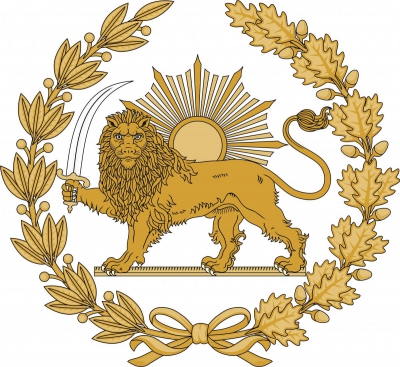Reza Shah Pahlavi (Persian: ; pronounced [ez h-e phlvi]; originally Reza Khan ( ); 15 March 1878 26 July 1944) was an Iranian military officer, politician (who served as minister of war and prime minister), and first shah of the House of Pahlavi of the Imperial State of Iran and father of the last shah of Iran. He reigned from 15 December 1925 until he was forced to abdicate by the Anglo-Soviet invasion of Iran on 16 September 1941. Reza Shah introduced many social, economic, and political reforms during his reign, ultimately laying the foundation of the modern Iranian state. Therefore, he is regarded as the founder of modern Iran.At the age of 14 he joined the Cossack Brigade, and also served in the army. In 1911, he was promoted to first lieutenant, by 1912 he was elevated to the rank of captain and by 1915 he became a colonel. In February 1921, as leader of the entire Cossack Brigade based in Qazvin he marched towards Tehran and seized the capital. He forced the dissolution of the government and installed Zia ol Din Tabatabaee as the new prime minister. Reza Khan's first role in the new government was commander-in-chief of the army and the minister of war.
Two years after the coup, Seyyed Zia appointed Reza Pahlavi as Iran's prime minister, backed by the compliant national assembly of Iran. In 1925, Reza Pahlavi was appointed as the legal monarch of Iran by the decision of Iran's constituent assembly. The assembly deposed Ahmad Shah Qajar, the last Shah of the Qajar dynasty, and amended Iran's 1906 constitution to allow selection of Reza Pahlavi as the Shah of Iran. He founded the Pahlavi dynasty that lasted until overthrown in 1979 during the Iranian Revolution.In the spring of 1950, he was posthumously named as Reza Shah the Great ( ) by Iran's National Consultative Assembly.His legacy remains controversial to this day. His defenders assert that he was an essential reunification modernization force for Iran (whose international prominence had sharply declined during Qajar rule), while his detractors assert that his reign was often despotic, with his failure to modernize Iran's large peasant population eventually sowing the seeds for the Iranian Revolution nearly four decades later, which ended 2,500 years of Persian monarchy. Moreover, his insistence on ethnic nationalism and cultural unitarism, along with forced detribalization and sedentarization, resulted in the suppression of several ethnic and social groups. Although he himself was of Iranian Mazanderani descent, his government carried out an extensive policy of Persianization trying to create a single, united and largely homogeneous nation, similar to Mustafa Kemal Atatrk's policy of Turkification in Turkey after the fall of the Ottoman Empire.
This is a list of monarchs of Persia (or monarchs of Iranic peoples, in present-day Iran), which are known by the royal title Shah or Shahanshah. This is a list starts from the establishment of the Medes around 678 BC until the deposition of the Pahlavi dynasty in 1979.
Earlier monarchs in the area of modern-day Iran are listed in:
List of rulers of the pre-Achaemenid kingdoms of IranMinor dynasties and vassal monarchs can be found in:
List of rulers of Parthian sub-kingdoms
Islamic dynasties of Iran

1935Mar, 21
Shah of Iran Reza Shah Pahlavi formally asks the international community to call Persia by its native name, Iran.
Choose Another Date
Events on 1935
- 26Feb
Treaty of Versailles
Adolf Hitler orders the Luftwaffe to be re-formed, violating the provisions of the Treaty of Versailles. - 16Mar
Treaty of Versailles
Adolf Hitler orders Germany to rearm herself in violation of the Treaty of Versailles. Conscription is reintroduced to form the Wehrmacht. - 25May
Big Ten Conference
Jesse Owens of Ohio State University breaks three world records and ties a fourth at the Big Ten Conference Track and Field Championships in Ann Arbor, Michigan. - 25Jun
Soviet Union
Diplomatic relations between the Soviet Union and Colombia are established. - 15Sep
Swastika
Nazi Germany adopts a new national flag bearing the swastika.

 English
English  español
español  français
français  português
português  русский
русский  العربية
العربية  简体中文
简体中文 